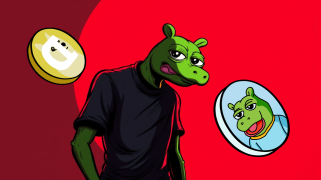
You can also read this news on BH NEWS: Dogecoin Co-Founder Speaks Out on Cryptocurrency Mental Toll
Dogecoin co-creator Billy Markus, also known as Shibetoshi Nakamoto on social platforms, recently highlighted the mental strain associated with cryptocurrency investment. His comments underscore the view that digital currencies should not be considered stable, long-term investment vehicles. Markus, recognized for his candid insights on crypto, initiated a conversation about mental well-being in relation to the stressors of crypto ownership.
Crypto Ownership: A Mental Health Question?
In his latest social media post, Markus shared a video featuring a man on the brink of making harmful decisions, juxtaposing it with the emotional roller coaster of holding cryptocurrencies. This provocative depiction aimed at questioning the psychological impact of crypto volatility on investors. Previously, Markus had labeled crypto and NFT investments as akin to mental illness, highlighting the extreme psychological ups and downs faced by investors.
A Clear Stance on Crypto Involvement
The DOGE founder has repeatedly expressed his detachment from the meme cryptocurrency world, emphasizing his personal disinterest in meme coins and ERC-20 tokens. Despite creating Dogecoin, he parted ways with the project soon after it began and frequently communicates his intention to stay out of the crypto scene. Even when prompted, Markus maintains that he is content with his current job and disinterested in rejoining the Dogecoin project or initiating a new digital currency.
In contrast, Tesla CEO Elon Musk has been a vocal supporter of Dogecoin, suggesting that the car company may embrace DOGE for payments in the future. Musk extols Dogecoin for its community-driven ethos and has indicated he prefers it to Bitcoin for its accessibility to the general population, as opposed to being a token favored by the wealthy.
Markus, while no longer deeply involved in the crypto market, does hold a nominal amount of Dogecoin and a fraction of Bitcoin. This investment stance seems to be more of a symbolic gesture than a solid bet on the market’s future.


 DogeHome
DogeHome Coin Edition
Coin Edition Optimisus
Optimisus TheCoinrise Media
TheCoinrise Media Optimisus
Optimisus BH NEWS
BH NEWS The Blockopedia
The Blockopedia COINTURK NEWS
COINTURK NEWS






















